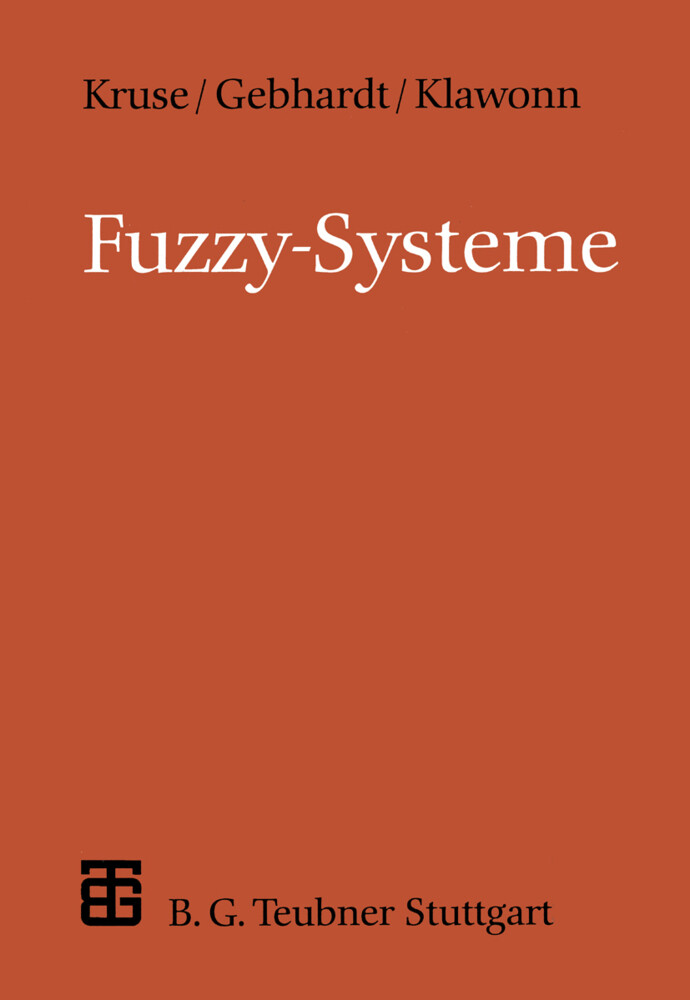
Zustellung: Sa, 30.11. - Mi, 04.12.
Versand in 3 Tagen
VersandkostenfreiBestellen & in Filiale abholen:
1 As a treatise on fuzzy set theory and its applications, "Foundations of Fuzzy Systems," by R. Kruse, J. Gebhardt and F. Klawonn, has few equals. Succinct, authoritative and up-to-date, it covers the basic theory very thoroughly and precisely, with emphasis on those aspects of the theory which play an important role in its applications. This is especially true of the chapters dealing with the calculus of fuzzy if-then rules - a subset of fuzzy set theory which plays a central role in the applications relating to the conception and design of both control and knowledge-based systems. To view the contents of "Foundations of Fuzzy Systems" in a proper perspective, a digression is in order. First, it is important to recognize that any crisp theory X can be fuzzified and hence generalized to fuzzy X - by replacing the concept of a crisp set in X by that of a fuzzy set. In application to basic fields such as arithmetic, topology, graph theory.
Inhaltsverzeichnis
1 Einleitung.- 1.1 Fuzzy-Systeme.- 1.2 Modellierung vager, impräziser und unsicherer Informationen.- 1.3 Zu diesem Buch.- 2 Grundlagen der Theorie der Fuzzy-Mengen.- 2.1 Fuzzy-Mengen: Eine motivierende Einführung.- 2.2 Einfache Repräsentationsformen für Fuzzy-Mengen.- 2.3 Verknüpfungen von Fuzzy-Mengen.- 2.4 Das Extensionsprinzip.- 2.5 Effizientes Operieren auf Fuzzy-Mengen.- 2.6 Zur Semantik von Fuzzy-Mengen.- 2.7 Fuzzy-Logik.- 2.8 Ergänzende Bemerkungen und Quellenangaben.- 3 Approximatives Schließen.- 3.1 Possibilitätsverteilungen und Unsicherheitsmaße.- 3.2 Konzeption eines Expertensystems für possibilistische Daten.- 3.3 Interpretation possibilistischer Inferenzregeln.- 3.4 Wissensrepräsentation und -propagation mit Hypergraphen.- 3.5 Logikbasierte Inferenzmechanismen.- 3.6 Ergänzende Bemerkungen und Quellenangaben.- 4 Fuzzy-Regelung.- 4.1 Kognitive versus klassische Modelle.- 4.2 Zwei Ansätze zur Fuzzy-Regelung.- 4.3 Entwurf und Optimierung von Fuzzy-Reglern.- 4.4 Fuzzy-Regelung auf der Basis von Gleichheitsrelationen.- 4.5 Fuzzy-Regelung und Relationalgleichungen.- 4.6 Ergänzende Bemerkungen und Quellenangaben.- Symbole.
Mehr aus dieser Reihe
Produktdetails
Erscheinungsdatum
01. Januar 1995
Sprache
deutsch
Auflage
2.Aufl. 1995
Seitenanzahl
292
Reihe
XLeitfäden der Informatik
Autor/Autorin
Jörg Gebhardt, Frank Klawonn, Rudolf Kruse
Co-Autor/Co-Autorin
Rudolf Kruse
Verlag/Hersteller
Produktart
kartoniert
Abbildungen
XI, 276 S. 11 Abb.
Gewicht
427 g
Größe (L/B/H)
229/152/16 mm
Sonstiges
Paperback
ISBN
9783519121305
Entdecken Sie mehr
Bewertungen
0 Bewertungen
Es wurden noch keine Bewertungen abgegeben. Schreiben Sie die erste Bewertung zu "Fuzzy-Systeme" und helfen Sie damit anderen bei der Kaufentscheidung.


































